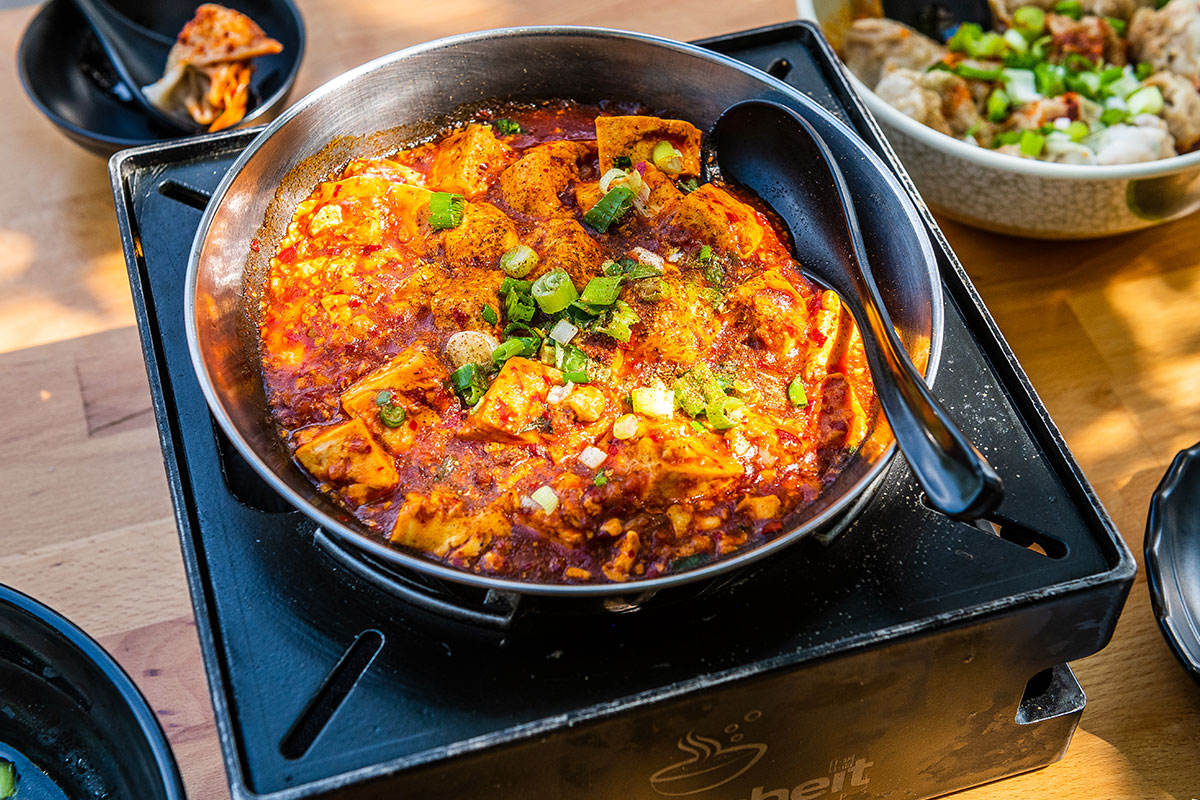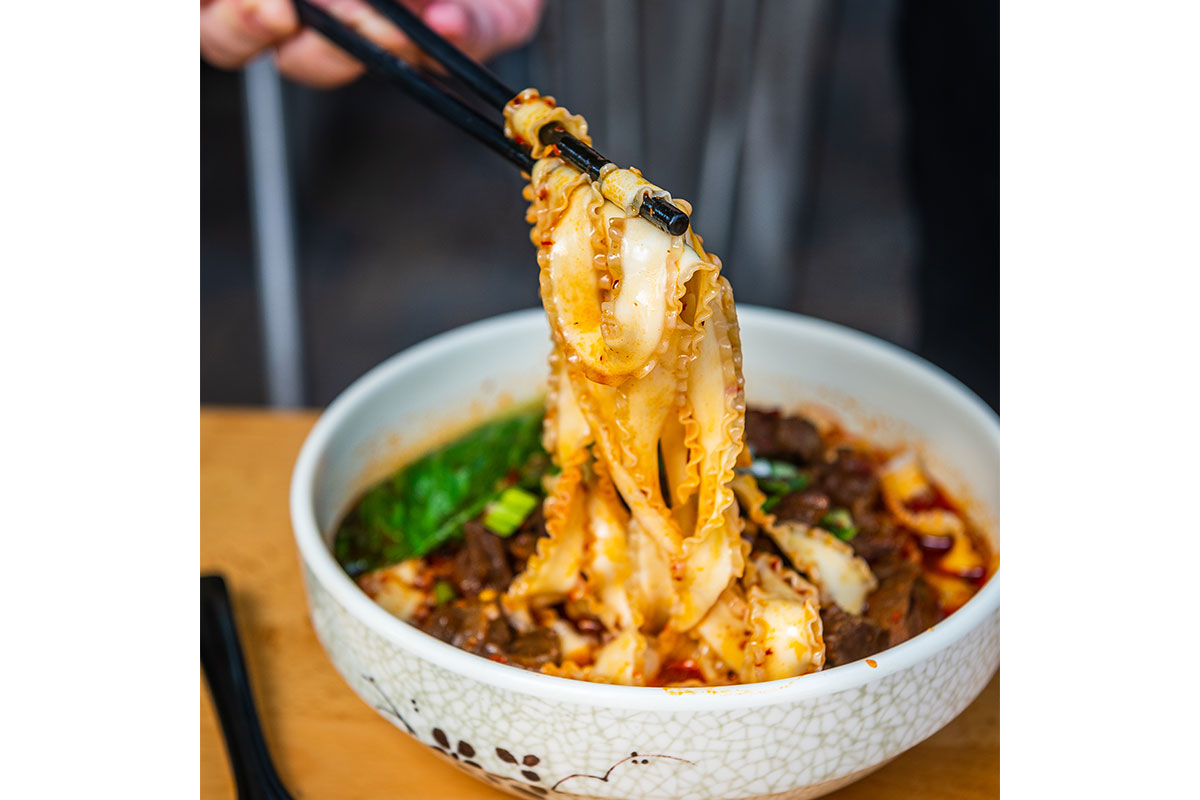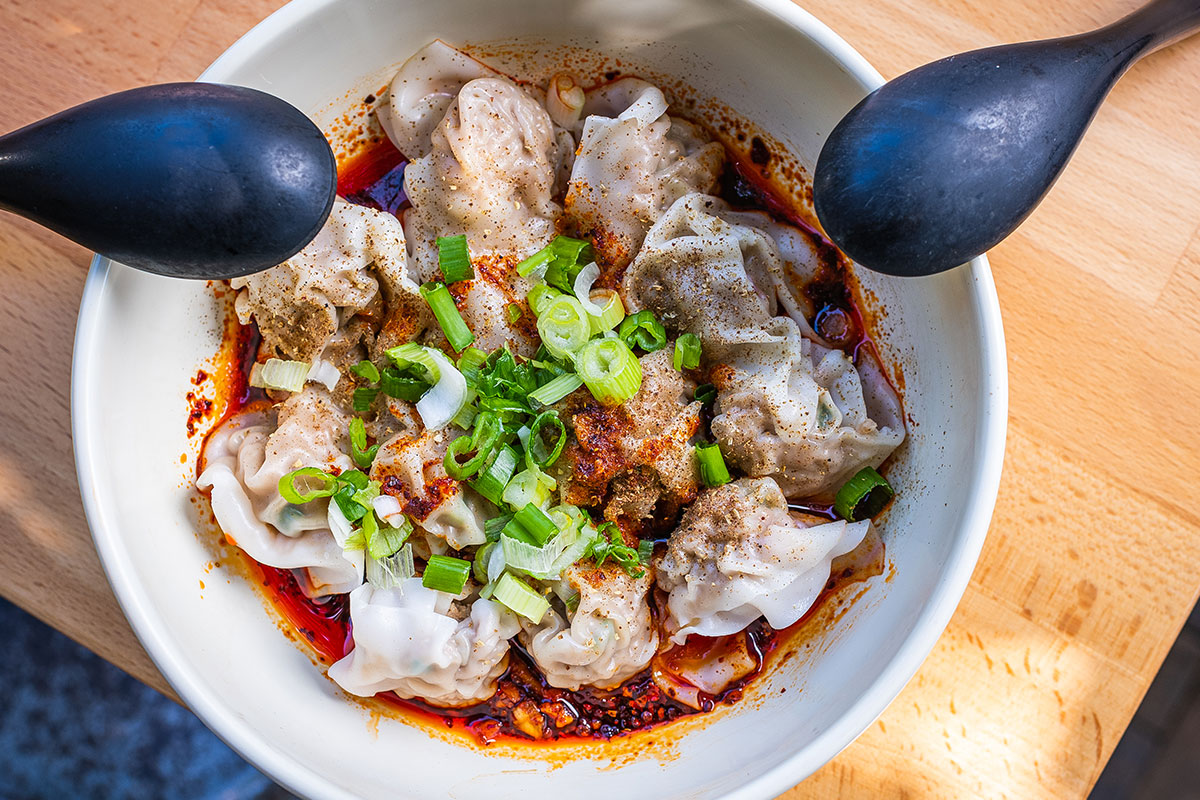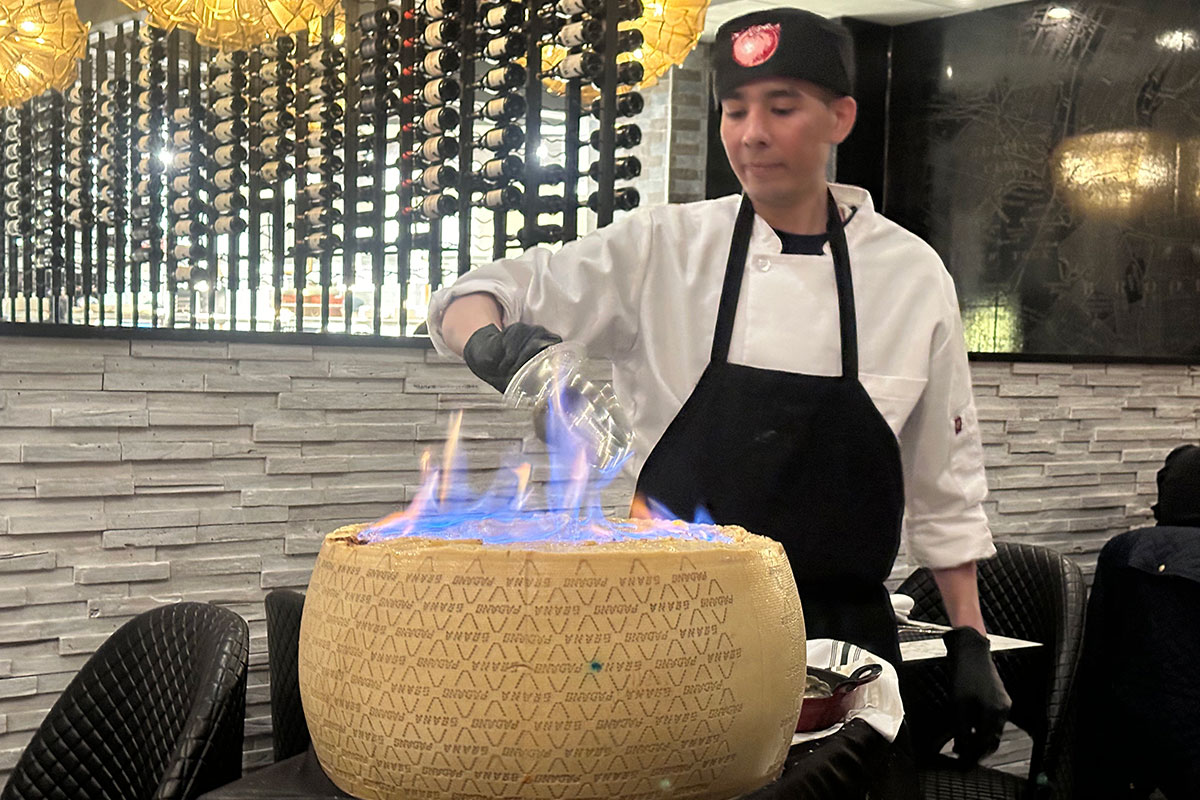Red is the color of Szechuan food. But if it errs on the monochromatic, the last thing you should think is that it’s one-note. That would be like saying that a Rothko color field “is just one color.” Chiles are the major contributors to the shades, which vary from dried rose to stop sign, but supporting players from bean paste to soy sauce deepen and add complexity to the burn.
When I first dined at a Chongqing-style restaurant in San Gabriel in the early aughts, I compared the sensation of eating my meal to dental surgery. I was talking about ma la, the combination of numbness of the Szechuan peppercorn and the fiery heat of chiles that merge in some of Szechuan cuisine’s greatest hits. My mouth has adjusted to the sensation, and many of my fellow Americans have joined me in an affection for Szechuan flavors. But if there’s one place in NoVA that can teach you that the cuisine is so much more than an assault on the senses or an unvaried color palette, it’s Fahrenheit Asian in McLean.
The menu changes regularly at Lilly Qin’s family restaurant, making room for a variety of dishes from her parents’ native Szechuan (specifically Chengdu), but also favorites from across China, and even Asia, but all “with a Szechuan spin,” as Qin puts it. Qin’s parents, Sharon Lu and David Qin, are both trained chefs, though she credits Lu as the primary force in the kitchen. She’s not the kind to cook by rote. With every recipe, she works with fresh ingredients to innovate and make the dish her own, but also adds a motherly touch that can’t be replicated.
One example is the usually humble onion pancake, or cong you bing. At your local Chinese takeout, you’re likely to find a skinny disk filled with scallions, choked to death with grease and presented with a side of sweetened soy sauce. In Lu’s hands, the $9.99 appetizer is presented as two robust cakes also filled with scallions, but doughy and chewy within as much as they are crisp outside. They’re accompanied not by a loose brown slurry, but a deep-earthy-red dip thickened and sweetened with fermented bean paste. With this version of the dish, it’s easier to see how it might have inspired Italians to make pizza.
Many restaurants leave their most beloved specials for the weekends. At Fahrenheit, it’s best to go on Monday when gingery wontons are on the menu. The ethereally thin skins, like the skirts of fairies, wrap and cling to the chubby orbs of pork in either soup or a slick of chile oil. The latter is dusted, snow-globe-like with the floral but numbing powder of Szechuan peppercorns. They have a hint of beautiful danger about them, like wandering into the poppy fields in The Wizard of Oz.

But regular customers would riot if the ma po tofu weren’t available every day. The seductively jiggly tofu arrives at the table atop a burner, bubbling in a sanguine sauce that burns the lips even more than it numbs them. It shimmies and shakes with alliums and crunchy ginger. Ground pork gives the oily sauce body, but the dish is available without it, and is almost as hearty and compelling. The burner is significant because it shows the care that Qin and Lu take in their food. Qin says that she wants every bite of the dish of her mother’s specialty to taste as if it just came off the stove. “We are changing people’s perceptions of ma po tofu because it’s been badly prepared by a lot of places,” Qin says.
That’s not the only time diners will see Fahrenheit-branded burners. An entire section of the paper menu handed to diners during phase one of reopening (there is hand sanitizer on every table too) includes hot pot dishes. Order the lamb hot pot, which arrives with a pile of shaved meat still glistening with ice from the freezer. Stir it to mix in thinly sliced potatoes, tofu, cabbage, mushrooms and a mix of other delights. Just make sure to eat the clams first. By the time we got to them, they had turned rubbery. But really, gold ingots could be dipped among the ingredients and the broth would lose little of its star power. It’s rich with marrow that coats the lips and calms the heart. It is exactly the comfort that makes you wish that Lu were your mother too, or at least that yours had the time to start a soup bubbling at least 12 hours before it’s served.

But a more rancorous broth is even better. The spicy beef noodle soup looks like it will be all heat, and though it does proffer its fair share, another spice makes it sweet and aromatic. Clove wafts from the bowl as it’s placed on the table. The chunks of beef within are cooked to such a state of near-dissolution that even pieces that prove to be all tendon melt away with the ruddy broth and the crunches of jade-colored bok choy. A rare false step is the fact that the noodles within when I tried the dish were overcooked just beyond the point at which they lost their al dente bounce.
The liang pi made up for this in spades. The chewy specimens are a favorite of mine, from the neighboring Shaanxi province, the same region known for perhaps the world’s oldest sandwich, the burger-like rou jia mo. Liang pi are called “cold skin noodles” for their slick, chewy texture, the result of being steamed. I was most familiar with the dish in its original Shaanxi style, which is served in a habit-forming combination of vinegar and chile oil with wheat gluten. The Fahrenheit version of the cold noodles is unsurprisingly chile-centric, but no less lovable thanks to a thick sauce brightened with slices of cucumber and a shower of scallions.
It’s one more example of Qin and Lu making China’s vast cuisines their own. Red is the color of Fahrenheit’s manifold dishes, and diners will want to taste every nuance of the mother-and-daughter’s loveladen cuisine.
SEE THIS
Hot pots bubble away on burners both inside the small, no-frills restaurant and outside on the front patio.
EAT THIS
Spicy beef noodle soup, spicy wontons, ma po tofu, onion cake. // 1313 Dolley Madison Blvd., McLean; Open daily for lunch and dinner; Appetizers: $4.99-$14.99; Entrees: $11.99-$22.99
This post originally appeared in our August 2020 print issue. Want more reviews sent right to your inbox? Subscribe to our Food newsletters.




